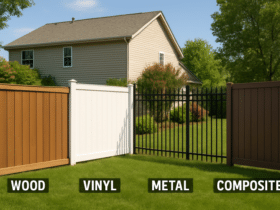Table of Contents:
- Introduction to Hardscaping
- Benefits of Incorporating Hardscaping
- Trending Materials in Hardscaping
- Creative Design Ideas
- Eco-Friendly Hardscaping Practices
- Increasing Your Property’s Value
- Overcoming Common Hardscaping Challenges
- Conclusion: Bringing Your Hardscaping Vision to Life
Introduction to Hardscaping
Hardscaping is an art form that uses nonliving materials to build features that enhance landscaping designs. These features include walkways, stone walls, patios, fire pits, and pergolas, all thoughtfully crafted to complement a garden’s living elements. Unlike traditional landscaping, which focuses solely on greenery, hardscaping adds structure and dimension, paving the way for creating inviting, sustainable, multifunctional outdoor living areas. This fusion of natural elements with human innovation creates a balanced and harmonious outdoor space.
Benefits of Incorporating Hardscaping
The advantages of hardscaping are manifold, offering much more than just enhanced visual appeal. Homeowners can improve their outdoor living spaces by incorporating hardscape elements, such as patio pavers, making patios ideal for social gatherings. Additionally, features like retaining walls can help to prevent soil erosion, adding an element of protection to landscapes. Compared to plant-based landscaping, hardscaping requires minimal upkeep, which is economical and time-saving. This means you can enjoy beautifully stark and structured spaces year-round without the constant need for tending that gardens demand.
Trending Materials in Hardscaping
The materials chosen for hardscaping play a significant role in defining the character and charm of an outdoor area. Natural stone and concrete pavers are valued for their durability and timeless elegance. Each material brings unique properties—natural stone offers an organic aesthetic that blends seamlessly with gardens, while concrete pavers provide flexibility in design and color. Innovators are continuously pushing the boundaries of design by experimenting with materials like glass and steel to create modern, cutting-edge outdoor environments. The Landscape Design Trends article is an excellent resource for more insights into these revolutionary trends.
Creative Design Ideas
Outdoor spaces should be an extension of one’s style, and hardscaping is a canvas for creativity. Imagine a serene garden retreat with a cascading water feature surrounded by smooth river rocks or an intimate patio corner with a built-in seating area cozy with vibrant cushions. Layering diverse textures like wood, metal, and stone can add depth and intrigue, forming a visually dynamic environment. Consider incorporating lighting alongside stone pathways to add a magical touch that enhances safety and ambiance during nighttime. Hardscaping can tailor environments to reflect individual lifestyles, favoring minimalist designs or more elaborate arrangements.
Eco-Friendly Hardscaping Practices
The importance of environmental responsibility has increasingly influenced hardscaping practices. Incorporating eco-friendly solutions not only supports sustainability but also promotes healthier outdoor environments. Utilizing permeable pavements allows rainwater absorption, reducing runoff and aiding groundwater replenishment. Materials such as recycled bricks or sustainably sourced wood minimize the ecological footprint. These practices ensure that your hardscaping serves functional and aesthetic purposes and contributes positively to environmental conservation.
Increasing Your Property’s Value
The significance of first impressions in the real estate industry cannot be overstated, and an effectively designed hardscape can markedly improve curb appeal. Buyers tend to gravitate towards properties with supplementary living areas, especially when these spaces encompass carefully planned outdoor settings. Hardscaping can enhance not just the visual allure of a property but also its functional value, often leading to a higher return on investment when it comes time to sell. Financial gains aside, investing in hardscaping delivers immeasurable personal enjoyment and satisfaction, showcasing the transformative power of an expertly crafted outdoor area.
Overcoming Common Hardscaping Challenges
Although rewarding, embarking on a hardscaping project can pose several challenges. Issues such as drainage problems must be adeptly managed to protect both the new installations and existing landscaping. Material longevity is another crucial consideration; choosing high-quality, weather-resistant materials can significantly prolong the life of your structures. Regular maintenance, though minimal compared to gardening tasks, is still necessary to address wear and tear, ensuring that your hardscaping investment remains in pristine condition. One can adeptly manage these challenges by employing thorough planning and utilizing suitable resources, guaranteeing durability and aesthetic enjoyment for your outdoor space.
Conclusion: Bringing Your Hardscaping Vision to Life
Revitalizing your outdoor areas with hardscaping is an excellent way to enhance your home’s beauty, practicality, and value. As you transform your landscape, consider all the creative possibilities and sustainable practices that enable you to mold an outdoor environment reflecting your vision. Whether undertaking DIY projects or enlisting professionals, the insights provided will serve as a valuable guide to realizing a captivating and enduring hardscape that elevates your daily outdoor experiences.








